Leatherback Turtle Nesting – An Ancient Journey
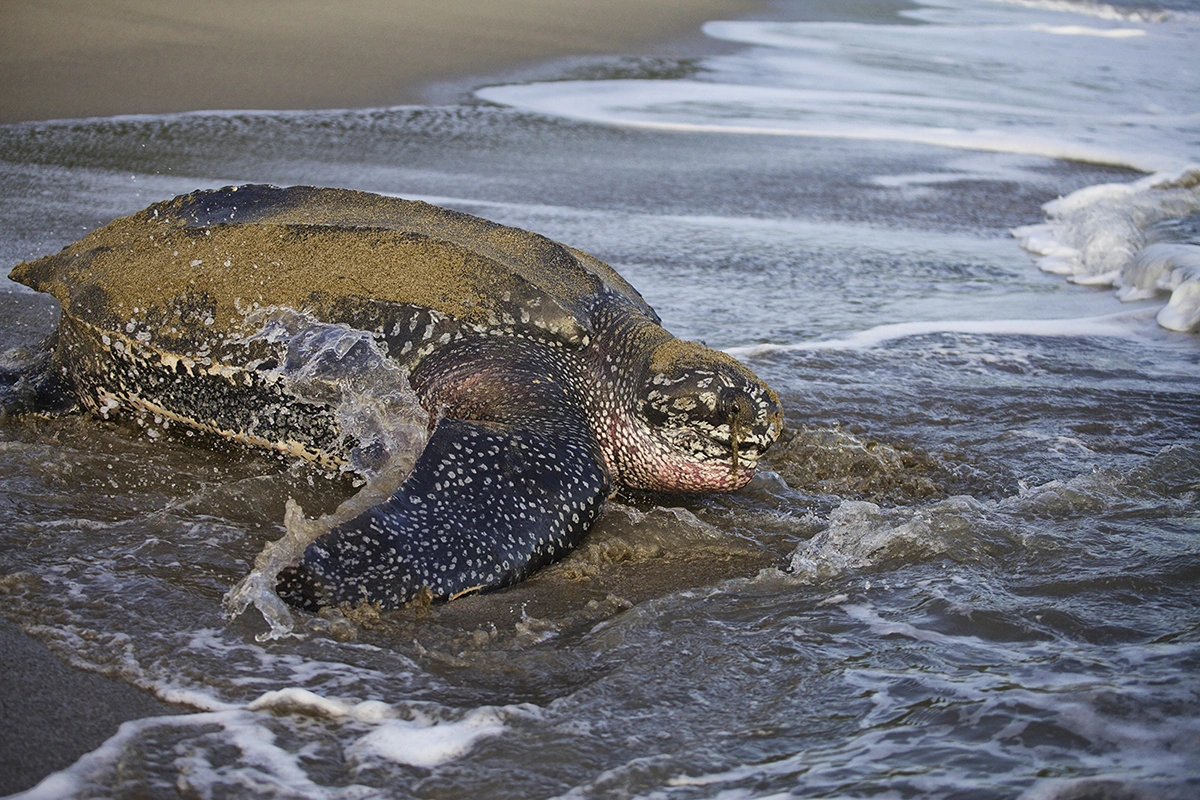
The relationship between nature and our fellow beings continues to astound me. My cat, Tofu, arises from a deep slumber at 5p.m. daily without fail. A yawn and a stretch, followed by the inevitable meow that roughly translates to, “It’s time. Where is my dinner, human?” It’s this ebb and flow between creatures and the world around us that I find amazing and its what’s drawn my wife and I to the small twin-island country of Trinidad and Tobago to view leatherback turtle nesting.
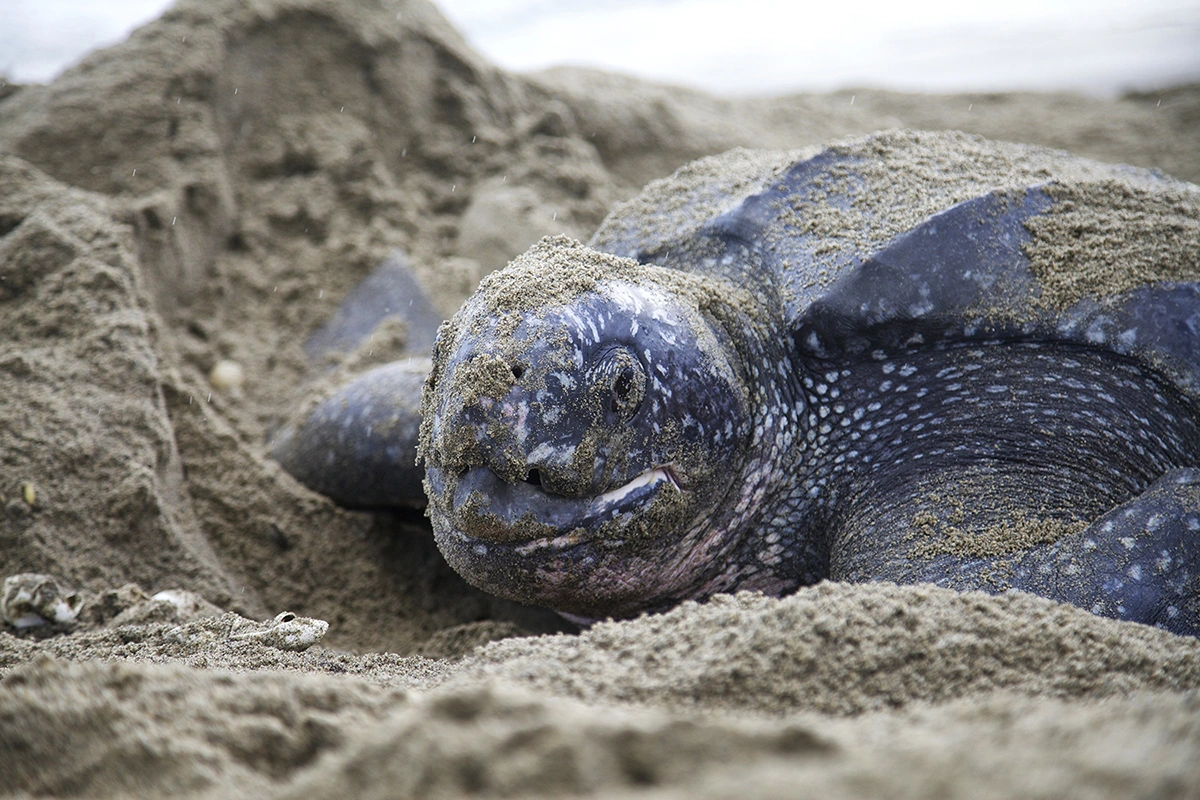
We are visiting the protected sea turtle nesting site at Grand Riviere during the height of leatherback turtle nesting season. These ancient turtles, an endangered species due to poaching and inadvertent capture by fishing nets, have an innate tie to their world. By the age of 25, female leatherback turtles begin to nest their eggs on dry land. Despite possible migration thousands of miles away from where they were born, female leatherbacks will return to their own birthplace to nest their eggs.
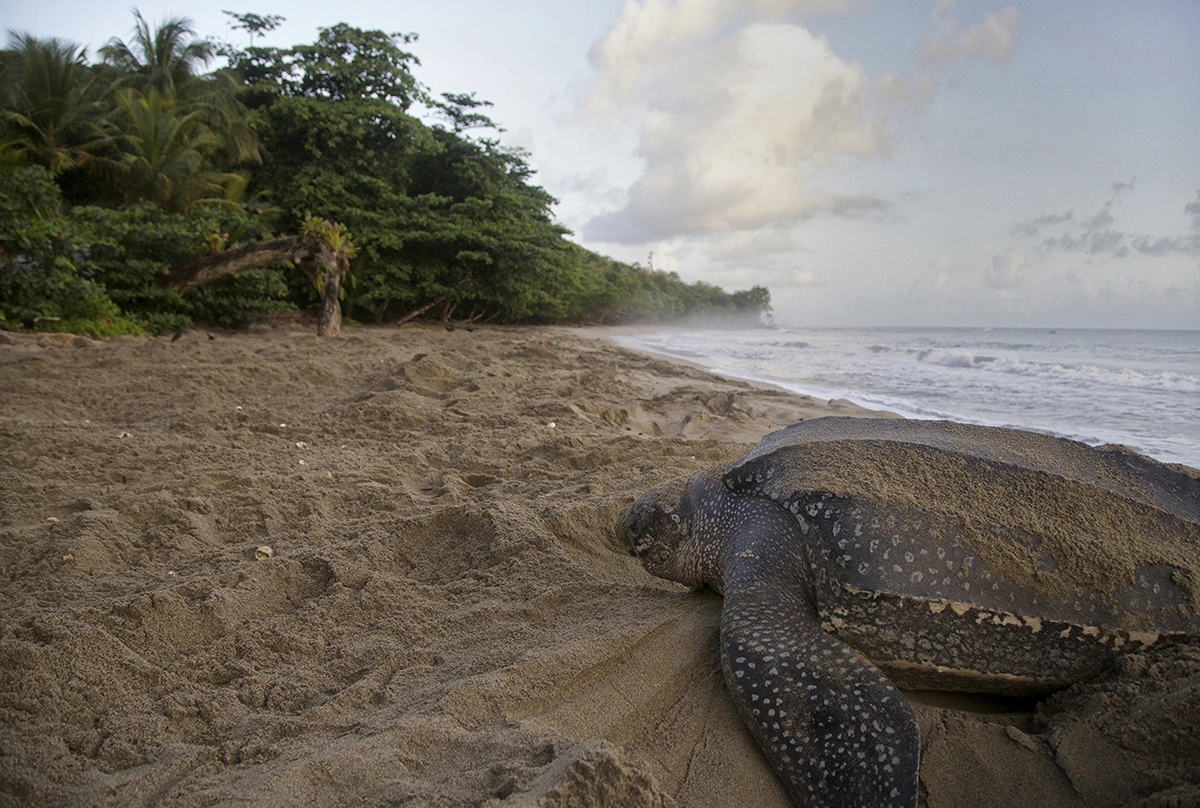
Female leatherbacks generally approach shore after sundown since they’re susceptible to light disorientation. They use their back feet to scoop and shuffle sand, eventually digging a hole up to three to four feet deep. The process is long and arduous – you can hear some turtles groan during the struggle. Once their back feet no longer reach sand, she begins to lay her eggs as she enters a trance-like state. It is during this state that local researchers tag and measure the turtle to track migration and nesting habits.
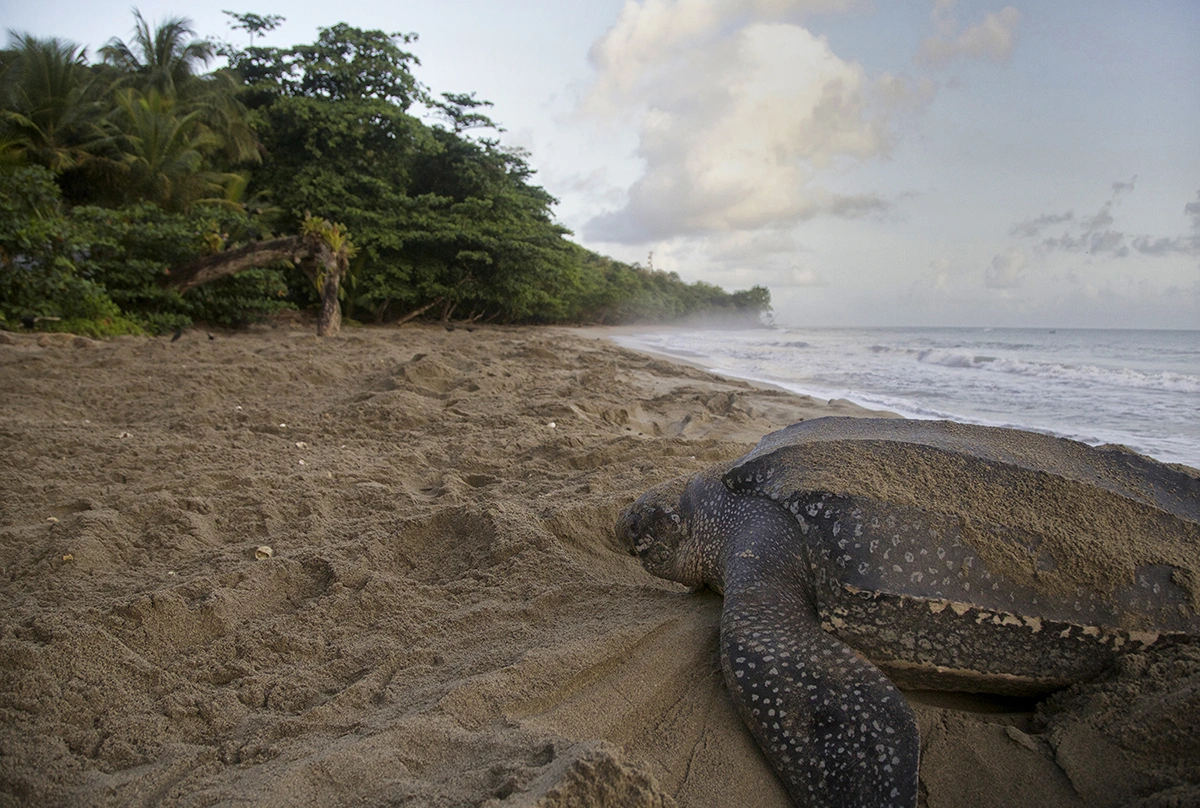
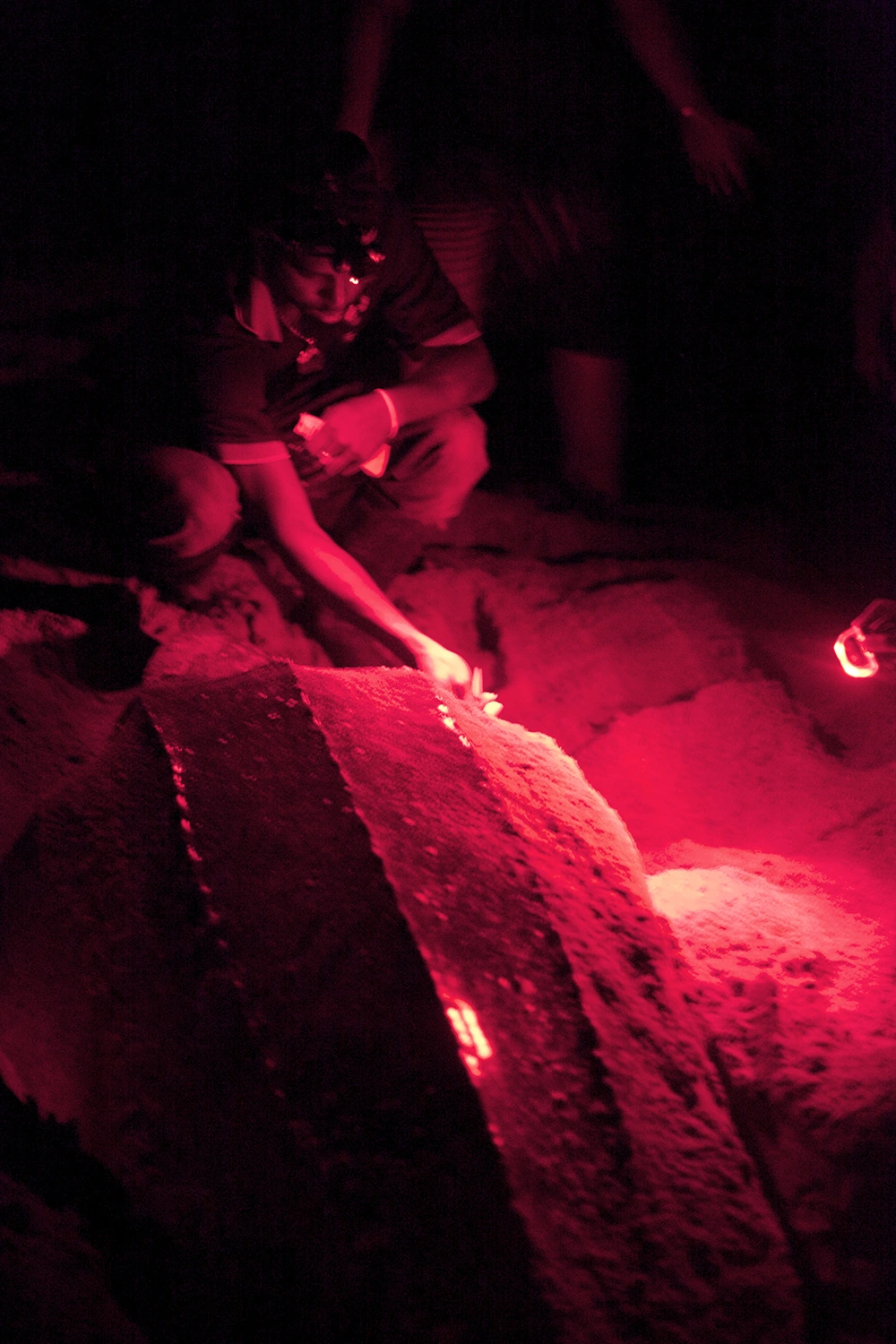
After the nesting is complete, she covers the hole with sand and rotates to face the ocean. Sometimes weighing as much as 1,500 lbs, the tedious and clumsy march toward lapping waves is endured until the relief of the sea’s buoyancy. And just like that, the turtles disappear into the abyss of the ocean. We witnessed only twenty or so leatherback turtles making this same journey, but our guide told us that over a hundred had surfaced from the sea that night.
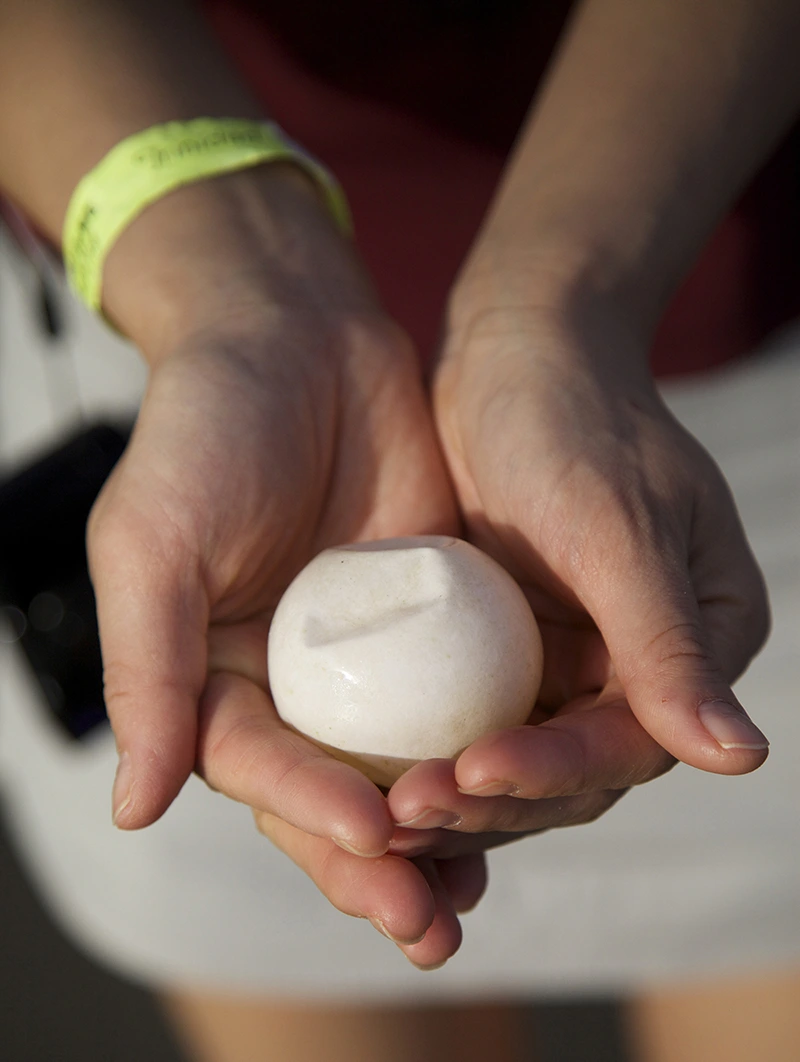
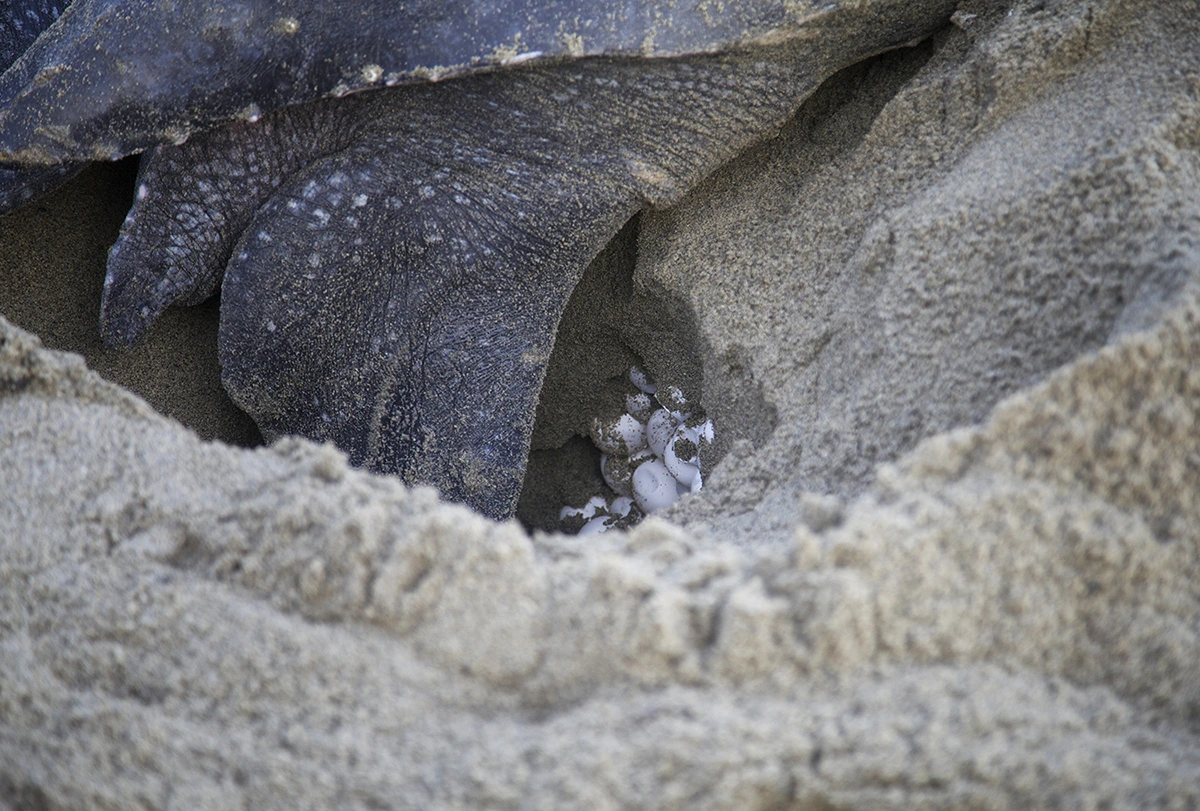
While most turtles successfully nest, we watched as a nesting hole collapsed. As the turtle struggled with her second attempt, her window of opportunity closed. Daylight had arrived. She fled back to the sea just as the morning rays blanketed the beach of Grande Riviere.
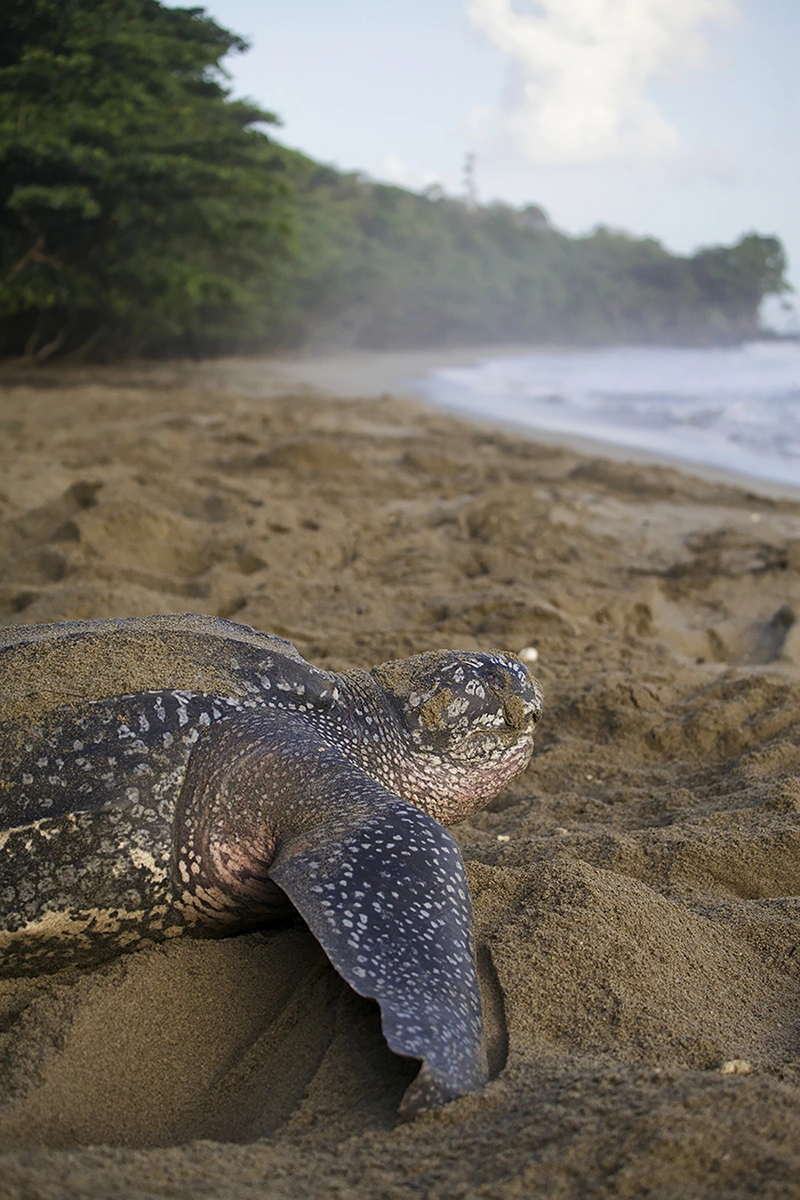
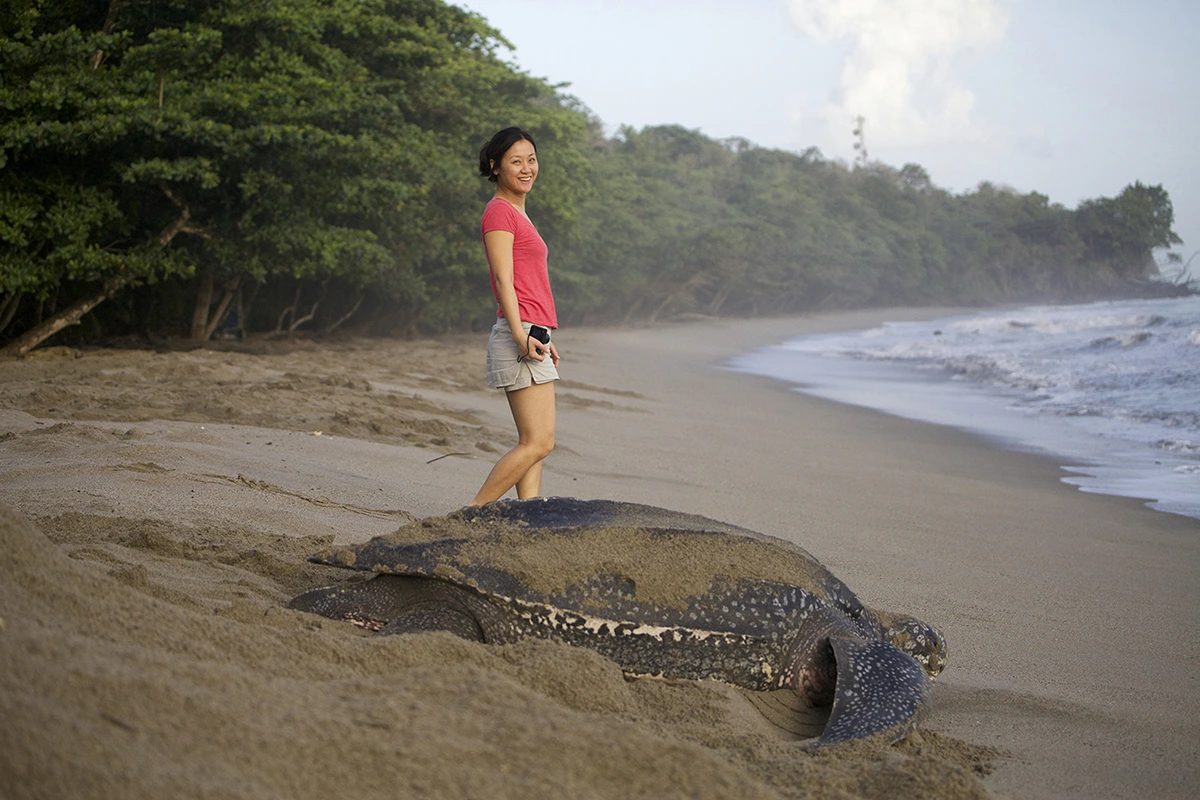
“She will be back,” a local guide mentioned promisingly. Like the powerful innate calling that brought her back to the beach of her birth, the urge to deliver those eggs will see her journey through.